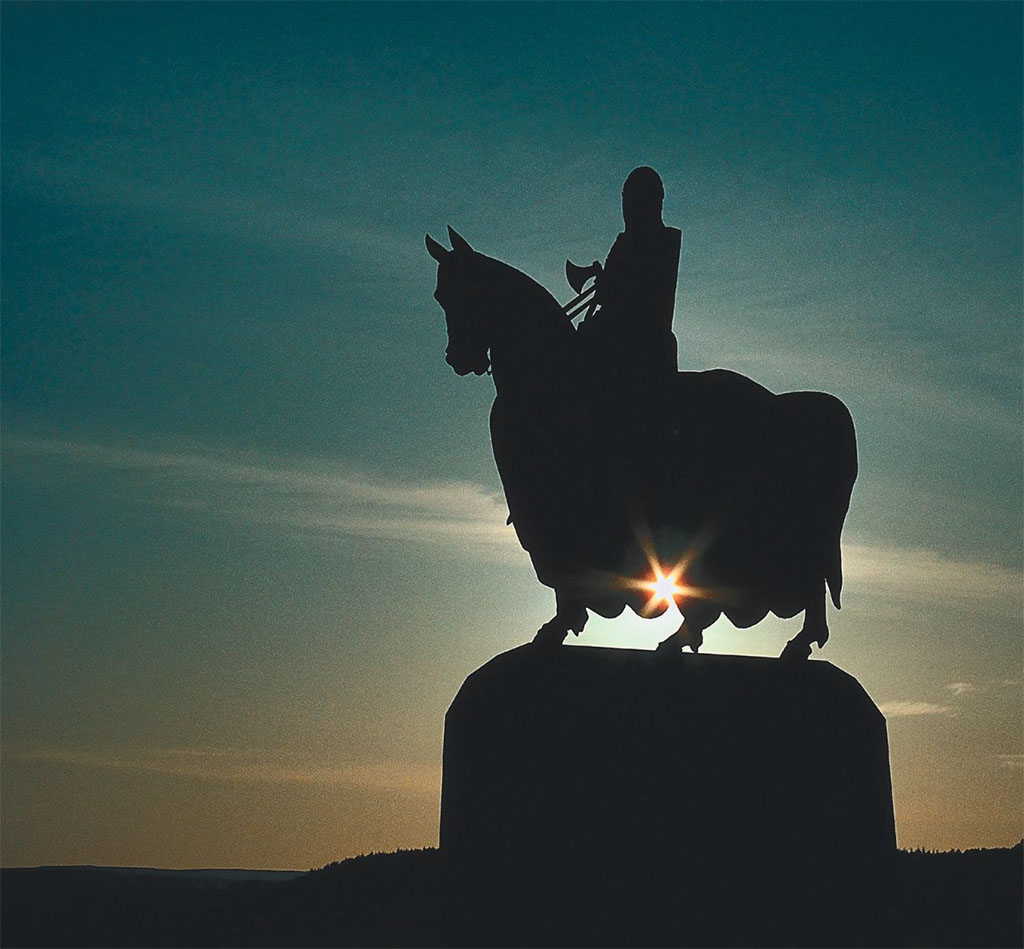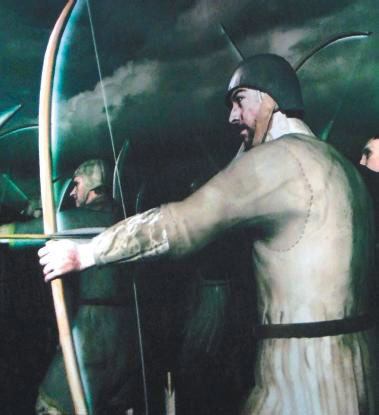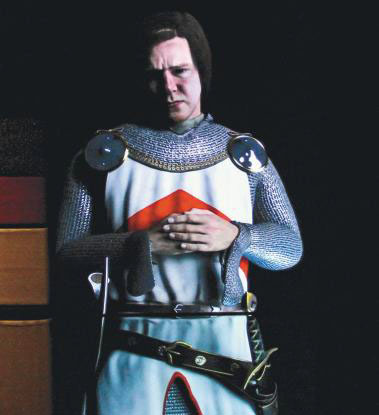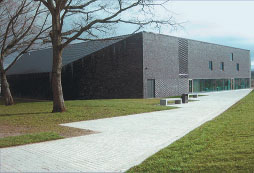
The battle fought 700 years ago remains one of Scotland’s defining moments
[caption id="ReturntoBannockburn_Feature" align="aligncenter" width="1024"]

© LOOK DIE BILDAGENTUR DE FOTOGRAFEN/ALAMY
BANNOCKBURN; THE NAME needs no explanation for anyone with even the slightest knowledge of Scottish history. Although the battle was fought 700 years ago, it remains one of the defining moments in the story of Scotland. For some Scots it is perhaps no more than romanticism, like the legend of Bonnie Prince Charlie, but nevertheless Bannockburn has a resonance, like Culloden and Gettysburg, that has endured over the centuries. This anniversary undoubtedly played a part in the Scottish government’s decision to hold the referendum on independence in 2014.
Although a full-scale battle was perhaps inevitable, it was probably not part of the Scottish king’s overall plan. Until that point, Robert Bruce, King of Scots, had been content to fight a guerrilla war, but his brother, Edward, had come to an agreement with Sir Philip Mowbray, the English commander then holding nearby Stirling Castle, that it would be surrendered if not relieved by midsummer’s day 1314. Stirling Castle had already changed hands five times and was seen as the military key to Scotland because of its strategic location at the heart of the country.
So the Scottish army under King Robert met the invading forces commanded by Edward II of England at Bannockburn near Stirling on June 23, 1314. The stakes were high for both sides as the winner would lay claim to Scotland, making it an independent country or part of England. Although the battle didn’t bring the hostilities to an end and Edward continued to lay claim to Scotland, Bruce’s victory effectively secured Scotland’s independence and made possible the Declaration of Arbroath, Scotland’s Declaration of Independence, which was signed in 1320. Additionally, it meant his future as king, always a precarious position in medieval times, and his hold over Scotland itself were more secure.
To celebrate the 700th anniversary, a new state-of-the-art visitors’ center, a joint venture between the National Trust for Scotland and Historic Scotland, has been opened on the site. Using the latest technology, the center explains in graphic detail how the battle was fought and shows how the superior numbers of the English army were defeated by the tactics of the Scots.
Thanks to the amazing 3D simulation, visitors find themselves actually in midst of the battle. The whole experience is amazingly realistic and as I entered the display I was initially quite disconcerted to find the shaft of a pike apparently a few inches above my shoulder. To achieve these startling effects, re-enactors were filmed fighting with plastic weapons and the resulting movements re-created digitally to give the displays a convincing reality.
There are few contemporary accounts of the battle. Edward had brought a poet, Edward Baston, with him, to write about his forthcoming victory. Baston was captured by the Scots, but negotiated his release by writing a poem recounting the battle from a Scottish viewpoint. History is truly written by the winners. In the years that followed, much of the story was embellished by romance and legend so, to ensure as far as possible the authenticity of battle scenes, leading academics have helped to interpret the battle.
ASHORT VIDEO SETS THE SCENE in terms of the royal politics of the time and the competition for the Scottish crown following the death of Alexander III. The giant screens in the main display area use the 3D simulations to portray the battle. The film includes an incident before the battle that might have changed its outcome. When a young English knight, Henry de Bohun, saw Bruce riding a pony and armed only with a small axe out reviewing his forces. He charged forward, but Bruce skillfully outmaneuvered him and killed him with a single blow.
Bruce’s army was at a disadvantage numerically, but he had chosen his ground well. (The best estimates suggest that Edward had 2,000 mounted knights and probably around 18,000 foot soldiers. King Robert had 500 knights and perhaps 6,000 infantry.) The terrain, with its bogs and streams, did not suit the English cavalry and forced the English army to fight on a narrow front.
[caption id="ReturntoBannockburn_img1" align="aligncenter" width="379"]

FORBES INGLIS

FORBES INGLIS
A Visit to stirling
GETTING THERE: The city of Stirling is situated in central Scotland and is easily reached by rail or road. Stirling can be accessed from either the M80 or M9. For Bannockburn, leave the motorway at Junction 9 to join the A872. The center is approximately two miles from the junction on the A872.

Stirling is also on the main rail line with connections to the other main Scottish cities and visitors arriving at the train station can complete their journey by bus. www.scotrail.co.uk

FORBES INGLIS
After an exchange of fire from the archers of the two sides, an English cavalry charge failed to penetrate the schiltrons (massed formations of Scottish spearmen). The knights thrown from their horses were soon dispatched and the remainder tried to fee. Unfortunately, they found themselves sandwiched between the Scottish army and their own advancing forces. Forced to fight in a restricted area meant that superior numbers gave no advantage and many of those who escaped death at the hands of the Scots drowned in the Bannock Burn. Edward himself was forced to fee, and his ambitions to rule Scotland effectively ended.
[caption id="ReturntoBannockburn_img5" align="aligncenter" width="1024"]

© STEVEN SCOTT TAYLOR/ALAMY
DESPITE THE GENERAL BELIEF, Bannockburn was not a straightforward fight between Scottish and English forces. There would probably have been mercenaries fighting for both sides and Edward certainly used Welsh archers, Irish foot soldiers and troops of other nationalities.
Visitors can immerse themselves in details of how the battle was fought. The new center features “character stations,” depictions of those who were at Bannockburn, including the two monarchs, knights, archers, foot soldiers and others. If you point at a figure, he (they are mostly men) will tell you about his part in the battle.
The highlight for many visitors, particularly the young, is the opportunity to take command of units from both sides. In medieval times, commanders were given orders from their king, but once out on the battlefield each had to make his own decisions as the fighting progressed. Members of each group of visitors are given an individual battle station and each one gets to move their allocated force, archers, cavalry or foot soldiers, around a layout of the battlefield. The results are fed into a computer until the battle is won or lost.
So what of the effect of Bannockburn on the referendum result? The battle, a rare Scottish victory among so many failures like Flodden and Culloden, has been a symbol of hope for nationalists for decades. The Scottish people made their choice, most likely on the basis of modern concerns such as the economy, employment and political party. For some, though, their vote was made with the heart rather than the head. They may, however briefly, have recalled Robert Burns’ epic poem, “Scots Wha Hae,” recalling Bruce’s address to his troops before Bannock-burn. Who could have anticipated that a 14th-century battle might affect the future of 21st-century Scotland?





Comments